Achieving Productive, Persistent Layers: A Holistic Approach to Profitable Egg Production
Achieving productive, persistent layers
Veterinary care for commercial layers has evolved significantly over recent years. During our time working with the industry, we have seen a change in approach, from a veterinary focus on the individual animal to the flock, and now the total farm microbiome and proactive health management.
With the challenges that the layer industry has faced recently, not least with rising costs, it is now more important that the management of bird health is integrated into the overall management of the farm business, and any interventions are backed by science and data.
When this approach is adopted, not only can flock health and welfare be improved but efficiencies can also be made, leading to more profitable and sustainable egg production by having productive, persistent layers. Another benefit is a reduction in egg production's carbon footprint.
Ensuring flocks have the best possible start into lay and maintaining them on a stable production path is the foundation of profitable egg production.
Charles MacLeodCommercial Layer Manager
Achieving productive persistent layers – the focus areas
Achieving persistency in lay requires attention to detail, planning (deciding well ahead of a new flock arriving what it is that you want to achieve) and animal husbandry. An in-depth understanding of the factors that contribute to making this achievable is also required – for example, knowledge and consideration of the bird’s physiology to understand how she can be supported and helped to develop to her full laying potential and continue to produce a high-quality robust shell.
But what areas should producers focus on to achieve this? Here we outline a few examples...
Pullets – getting the foundations right
The rearing period creates the foundation for flock performance, getting the flock well established to become productive persistent layers. Layer farmers should be particularly aware of the environment, brooding, feed/nutrition and vaccinations.
Other benefits of understanding the rearing period include:
- Tailoring the rearing program to suit environment and egg contracts
- Influence of early weights on the immune system and GIT development
- The rearing period doesn’t stop the moment pullets are transferred – it continues until the onset of lay
- The ability to plan the flock placement to reduce stress
Clutch length
One of a number of genetic traits focused on by breed companies is clutch length, which is roughly the period of time that a hen lays an egg every day before taking a break and then recommencing.
Hens that lay 150 eggs continuously without a “pause” are not uncommon, but within the standard 16,000 flock size, there will obviously be a “range” of clutch lengths, which will all blend together to produce laying statistics for the flock as a whole.
Ensuring that hens express their best possible clutch length is fundamental to profitable egg production. Concentrating on being ahead of the breed standard by ensuring your new flock gets off to the best possible start and is able to maintain the highest production level requires a blend of nutrition, management and planning.
Managing stress and disease pressure at commencement of lay, matching nutrition to egg output and regular monitoring of hen body weight are all key to ensuring that the hens can express their full genetic potential.
Biosecurity and disease control
Good biosecurity is paramount during the egg production period and between flocks - not least to keep out diseases such as Avian Influenza and Salmonella.
However, biosecurity doesn’t only come in the form of cleaning and other ‘traditional protocols’ – it encompasses all things that contribute to keeping pathogens out. For example, when we look at Salmonella control, organic acids in the water or in-feed products can support gut integrity and provide protection, by ensuring that the conditions in the hens GIT are unfavourable for salmonella colonisation and proliferation.
Vaccinations
The importance of a tailored vaccination programme shouldn’t be underestimated. For example, Infectious Bronchitis will cause production losses and quality downgrades, with production dips of between 5% to 10% common (in the absence of any secondary infection). Depending on the strain, however, it can be as high as 70%.
Management focus should also be directed towards:
- Reducing environmental disease pressure
- Recognising and mitigating flock stress
- Ventilation
- Water quality and cleanliness
- Lighting
- Recoverable egg
Example results
The examples below are simplified, however demonstrate some of the financial benefits that can be achieved, by adjusting flock management in certain key areas.
Improving feed utilisation, reducing its usage by 5g/day
- 35g less feed per bird per week
- 56 weeks lay = 1.96kg less feed per bird over 56 weeks
- 16,000 hens = a saving of £10,000 (feed at £319/tonne)
Reducing mortality during the flock cycle
Figures returned during the ‘Manure Survey’ for BFREPA showed mortality levels at 76-week flock age ranging from 2.5% to over 11%.
- 16,000 hens laying at 90% produce 8,400 doz eggs per week
- 5% mortality reduces hen numbers to 15,200 and reduces egg production by 420 doz per week
- Income lost is £638/week with an egg price at £1.52/doz
- Income lost is £35,728 over 56 weeks
Protecting flock health with vaccination
The following example highlights the potential financial cost/benefit of a tailored vaccination programme. It is based on the impact of an IB episode over a four-week period, and depopulation at 76 weeks.
- 16,000 hens
- 10 vaccinations throughout the cycle, administered in the water cost £800
- Income is reduced by £2,550 if production dips by 5% (based on a medium egg at £1.52/doz)
- Income is reduced by £1,209, if there is a 5% increase in farm and graded seconds (based on £0.80/doz)
Working together
To achieve productive, persistent layer flocks, a holistic and planned approach is required where the veterinary and on-farm management teams work together, throughout the cycle.
Our health plans are focused on a preventative approach and encompass all aspects of layer flock management. As a veterinary team, we have the experience and knowledge to advise on these areas and draw on the expertise of our field services team and associated companies.
If you‘d like to find out more about how St David’s Poultry Team can support your flock, please contact Commercial Layer Manager, Charles Macleod, at 07469 295540.












More about St David’s Poultry Team
St David’s Poultry Team was formed in 2006, yet we have a long history of poultry veterinary work as the Practice at Exeter was working in the South West poultry industry from the 1970s.
Over the last 30 years, the business has developed considerably. We are now the largest independent poultry veterinary practice, with 28 vets and field technicians working from 13 bases across the UK. We also have 2 practices in the Republic of Ireland, looking after a considerable amount of the Irish poultry sector. And we continue to expand.
Innovation has always been the core of our approach to bird health. We strive to be at the forefront in introducing and developing the latest technology, interventions and products, continuously running a number of trials to ultimately find the best solutions to today’s, and tomorrow’s, challenges.





